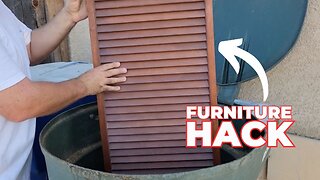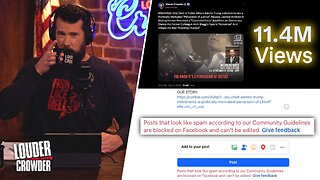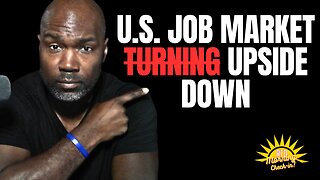Housing Crisis Alert: Why America Needs 4.5 Million More Homes!
🛑 The U.S. Housing Crisis: What's Really Happening? 🛑
Have you noticed that homes for sale seem to be scarce? 🏘️ Despite this, inventory isn’t flying off the shelves. In this video, I dive into the complexities of the current real estate market. 📉 With over 1% of the U.S. population needing homes (that's about 4.5 million homes), the situation is dire. Yet, prices remain high, and builders are pulling back. Let's unpack why this is happening and what it means for you. 🔍
📉 Decline in New Construction: A Deep Dive
In May, housing starts for new construction fell by 5.5%, reaching the lowest point since June 2020. 📉 This decline includes both single-family homes and multi-family apartments. 🏠🏢 The uncertainty we faced during the pandemic has returned, but now with a different twist. Builders are cautious, holding back due to rising costs and unpredictable future interest rates. 📈 This marks a significant slowdown in the housing market, with construction levels unable to meet the existing demand.
📉 The Impact of High Interest Rates
Builders face rising costs and the fear of future rate increases. 📈 This fear is causing a reduction in new housing starts, which is a leading indicator of the housing market's health. 🛠️ Higher interest rates mean higher construction costs and less borrowing power for potential homeowners. This scenario is creating a backlog in the housing market, with not enough homes to meet the demand. 😟
🏠 How This Affects Buyers and Sellers
If you’re a buyer, fewer homes on the market mean continued high prices, even with elevated interest rates. 💵 If interest rates drop, demand will surge, further driving up prices due to the limited supply. For sellers, this might be an advantageous time as their properties could maintain or even increase in value. 📈 However, the overall economic uncertainty could impact both buyers and sellers in unpredictable ways. 🤔
🏢 Multi-Family Housing and Rentals
The slowdown in new apartment construction is even more pronounced than in single-family homes. 🏢 For renters, this means fewer new rental units hitting the market, potentially keeping rental prices high or pushing them higher. 📈 The current job market, despite seemingly good reports, reveals deeper issues with many jobs being part of the gig economy, leading to financial instability for many. 💼
🏦 The Commercial Real Estate Crisis
Commercial real estate, especially office buildings, faces a looming crisis with over $38 billion at risk of default or foreclosure. 🏦 The last time we saw such numbers was during the 2012 recession. High interest rates and declining rent revenues are making refinancing difficult, leading to potential defaults and foreclosures. This situation could have a ripple effect on the broader economy. 🌐
💰 The FDIC and Bank Failures
With 63 banks on the verge of collapse, the FDIC's insurance fund could be stretched thin. 🏦 If more banks fail, especially larger ones, the FDIC may not have enough funds to cover all the insured deposits. This could lead to a broader financial crisis, affecting everyone with money in the bank. 🏦
🏠 Final Thoughts and What You Can Do
The real estate market is in a precarious position, with high interest rates and a shortage of homes exacerbating the situation. 🏠 Whether you’re a buyer, seller, or renter, staying informed and prepared is crucial. I’m not selling my properties, but instead focusing on improving and maintaining them. What about you? Share your thoughts in the comments! 🗨️
📢 Like, Comment, and Subscribe!
If you found this video informative, please like, comment, and subscribe! 👍 Your support helps me continue to bring you the latest insights on the real estate market. 🔔 Share this video with anyone who might benefit from this information. 🌟
-
 2:08:31
2:08:31
Right Side Broadcasting Network
16 hours agoLIVE REPLAY: Pres. Donald Trump Holds a Press Conference at Trump Tower in New York City - 9/6/24
105K69 -
 16:42
16:42
Neil McCoy-Ward
2 hours ago🔥 You Won't Βelieve What Τhey Are Proposing To Do Next… !!!
4.25K5 -
 1:01:58
1:01:58
Hometalk
22 hours agoWhy homeowners are currently OBSESSED with old shutters (this is brilliant!)
9.52K1 -
 2:21:58
2:21:58
Film Threat
18 hours agoBEETLEJUICE! BEETLEJUICE! BEETLEJUICE! | Film Threat Livecast
12.8K1 -
 59:32
59:32
The Dan Bongino Show
6 hours agoThe Secret Service Has Some Explaining To Do (Ep. 2324) - 09/06/2024
467K1.38K -
 1:04:24
1:04:24
Steven Crowder
5 hours agoFALLOUT: How DOJ Story is Hunter Biden Laptop 2.0
199K236 -
 57:53
57:53
The Rubin Report
3 hours agoMark Cuban Struggles to Hide His Anger as Host Points Out His Stupidity
39K40 -
 1:18:31
1:18:31
Caleb Hammer
1 day agoMost Insane Person EVER | Financial Audit
30.6K7 -
 36:19
36:19
Rethinking the Dollar
2 hours agoForeign-Born Jobs Skyrocket While Natives Suffer | Morning Check-In
18.6K7 -
 2:58:02
2:58:02
Wendy Bell Radio
9 hours agoKamala Harris Becomes A Global Joke
76.7K159